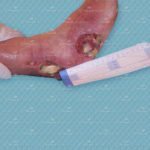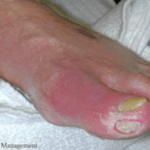Fistulas
A fistula is an abnormal opening between two epithelial surfaces,1-3 usually involving a communication tract from one body cavity or hollow organ to another body cavity or hollow organ. For example, a gastrointestinal fistula joints the lumen of the gastrointestinal tract to another organ, while an enterocutaneous fistula involves a communication between the lumen of the…


